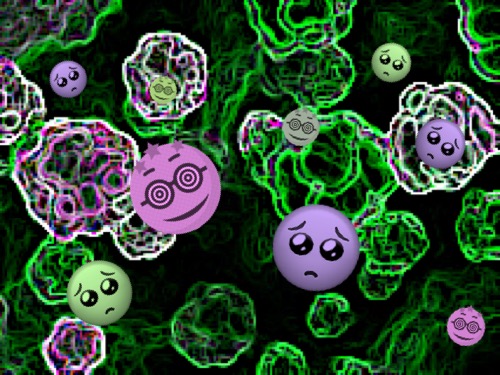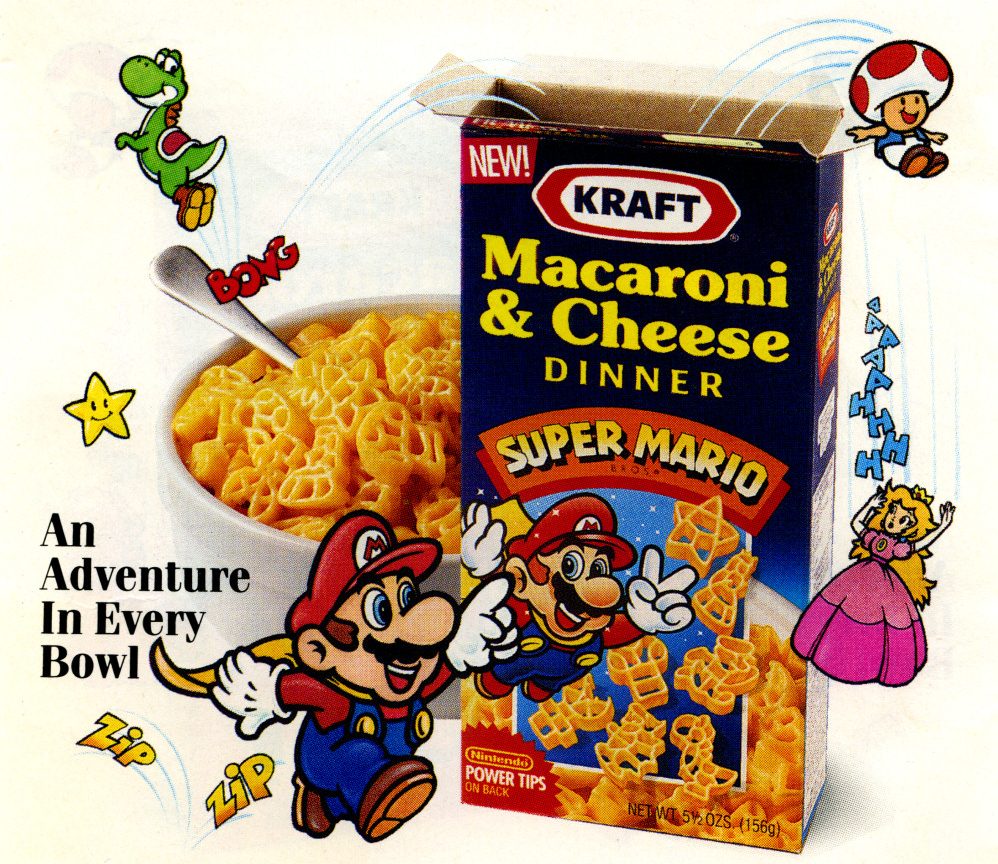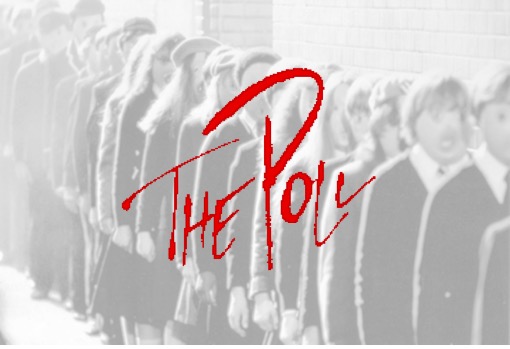Worse Than a Crime, a Bumble

tfw the dating app is creepier than the date.
Online dating is gross. Apps know this. Hinge tries to offer consolations, reminders that it knows we don’t want to be using it. Tinder’s #SwipeLife is an apologia, not suicidal, but not without remorse, either.
And then there’s Bumble.
Bumble’s tagline is “Date, meet, network better.” It smacks of always-be-optimizing even more than Tinder did, back when Tinder first launched. It touts that there is no equality (between men and women) without respect and it promises to challenge outdated heterosexual norms.
Bumble tells women the choice is theirs, that it’s for and by them, by explicitly putting them in the masculine role. In fact, women have no choice but to start the conversation, or their matches disappear.
Sex Before Silicon
When I was in college in New York City, exposing yourself to “sexual liberation” was a totally manual process. Eighteen and nineteen-year-old girls would apply red lipstick, the universal “I’ll f— you” signifier, and pose as twenty-five-year-olds at night clubs. We all knew it was a buyer’s market in the Meatpacking District; not all of us would go home with someone. And when we did? The more you experienced, the more you let these men do to you, the cooler you were. These things still had capital because you could very well find yourself alone—not hot enough, not cool enough, not sexy enough.
Pre-2010, sex positivity was cool because there was a barrier to entry. Sometimes it was how attractive you were, like if you were in a city like New York. Other times, it depended on if you were extroverted enough, if you were willing. But regardless of what the barrier was, it wasn’t for everyone. At the time, the behavior was transgressive. It was punk rock.
Then Silicon Valley descended like a vulture, and sexual liberation became a product feature.
In the empty gulf between “the gays are doing it” (Grindr and Scruff) and “we’re becoming less conservative about sex,” Tinder was born. When this more “progressive” approach to sex, and by extension dating apps, hit the mainstream, it began with the illusion that women were finally able to make informed, empowered choices. This was a grand expression of feminism, and a lot of people believed it.
The difference Tinder made became clear to me when a younger friend and I spoke about our respective college experiences. I, personally, never went home with someone from a bar or club in New York City. I had two (consecutive) boyfriends, and then, feeling like I wouldn’t be able to attract anyone else, I married my second ever long-term relationship.
My friend was floored by my experience, and in totality. Really, you couldn’t find anyone? All she had to do was swipe. I had few choices, she had myriad choices.
The choice to send pics of her tits; the choice to get lip fillers; the choice to say yes to the man who doesn’t want to be her boyfriend when he asks whether or not he can f— her ass. The choice to find another man who’d occupy that same space, over and over again, and to find him easily.
But sexual liberation via dating apps didn’t say “Look how disposable you are.” It said, “Look at how disposable these guys are.” It was a clarion call for independent women everywhere, who could finally tell them, “now you’re the ones we can throw away!” And all with the help of a platform designed to make this easy.
As we marched on, two things became obvious. The first was that the only thing that really changed was that our ids were simultaneously let loose and automated. The door was kicked wide open for everyone to experience what had previously been walled off to a select few. As soon as everyone had access to it, it lost its cachet. It wasn’t transgressive anymore, it was exhausting.
The second obvious thing was that even if this new landscape was actually different, and not just an amplified version of what was already problematic, treating men like they’re trash didn’t feel very good in the long run. Even if women had more control over their sexual situations, the whole compostable sexual partner thing was still alienating. Treating people as objects was just a mirror of how we’d already been hurt by the patriarchy. And even if taking on the masculine role was empowering, you’d still have to attract one guy after the other in the first place. And what, exactly, does that entail? How subversive is that really?
An influx of dates also promised that rituals that once indicated commitment or rebellion, like anal sex, became casual, throwaway events. Good dates were discreet and often meaningless encounters, not necessarily indications of a relationship to come. We’re all buying and trading something (our time, our bodies)—but to arrive at what objective?
Option Life
Women rack up sex partners in the high tens, get ghosted, move on, get ghosted again. Dates are set up one after the other, further bolstering the illusion of choice.
“I have plenty of options,” you tell yourself, sleeping with one man after the next, barely registering each rejection as your next date approaches. Men, on the other hand, long for relationships but have a permanent wandering eye installed in them, with apps promising that better is out there if you’re willing to keep swiping.
There are also men and women who receive no matches at all. They’re rendered invisible by the larger conversation about hook-up culture, as if hook-up culture is the problem. They become martyrs, and write themselves off as unlovable, when really, it’s just that they didn’t have the right selfie, or didn’t adequately proclaim their love for The Office or traveling. Or maybe they’re five pounds too heavy or two inches too short or four years too old.
“This is my life,” they lament, truly believing they’re deserving casualties. The market is just becoming more effective, and they’re martyrs. This isn’t true for most of this population, but one can imagine how it feels. Why don’t you have a partner? Poor marketing. Or worse, poor market fit.
Women, too, age out of the dating pool because the filters on life are set to under twenty-five. This is when the first point becomes obvious. The worst parts of dating didn’t change, we just gave them the space to grow out of our control. Dating became less regulated.
Women, who in 2012 felt empowered, put their phones down and found out that they were in the passenger seat—not driving—the whole time.
Churned
How’d they do it? The trick is to convince women to buy into the process while they’re young and there is a proliferation of offers. When you’re twenty-one and everyone wants you, it’s easy to feel like you’re making real choices. Ultimately, the whole project was a sham. Just like the gig economy didn’t offer economic freedom, the dating economy didn’t offer romantic freedom. It only created a formal dating market.
Markets need to keep moving. And so, if everyone was in a relationship these apps would cease to exist. The design needed to ensure that people stayed on them. For women, that meant, initially, that the desire for companionship was channeled into a new opportunity: to become a sexual girlboss.
The uncritical approach to sexuality is now passé. In 2020, we are not only atomized, but we know we are atomized. We are aware that romance, especially, has become a hideous, empty shell. Most dating apps think they’re still speaking to us with ad campaigns that say things like “It’s okay to choose Mr. Right based on how far he leans left,” but at this point, they’re just speaking to one another.
Meanwhile, the landscape is so destroyed that we have no choice but to participate anyway.
It’s a response to a response. We’re still lonely. So we’re still swiping. And for bumbling men, it’s an invitation to perform. Be a feminist, get laid. Reject, recycle, repeat.
Bumble is the end point of the sex positivity of 2008. It’s police at the Pride Parade; it’s Starbucks employees sharing their pronouns under mandate. It is the clearest, most self-congratulatory expression of girlboss sexuality, and to be perfectly honest, it’s creepy af.
It’s wrapped up in a faux-progressivism that’s supposed to make us feel better, but in 2020, we’ve already seen too much. At every stage of the process, it says to us, you’re in charge, remember?
But we know now that we’re not in charge. The market is.
The American Mind presents a range of perspectives. Views are writers’ own and do not necessarily represent those of The Claremont Institute.
The American Mind is a publication of the Claremont Institute, a non-profit 501(c)(3) organization, dedicated to restoring the principles of the American Founding to their rightful, preeminent authority in our national life. Interested in supporting our work? Gifts to the Claremont Institute are tax-deductible.
Does politics have an answer to digital disenchantment?
The case of CNN.
Voters are growing sick of being sold as news.






